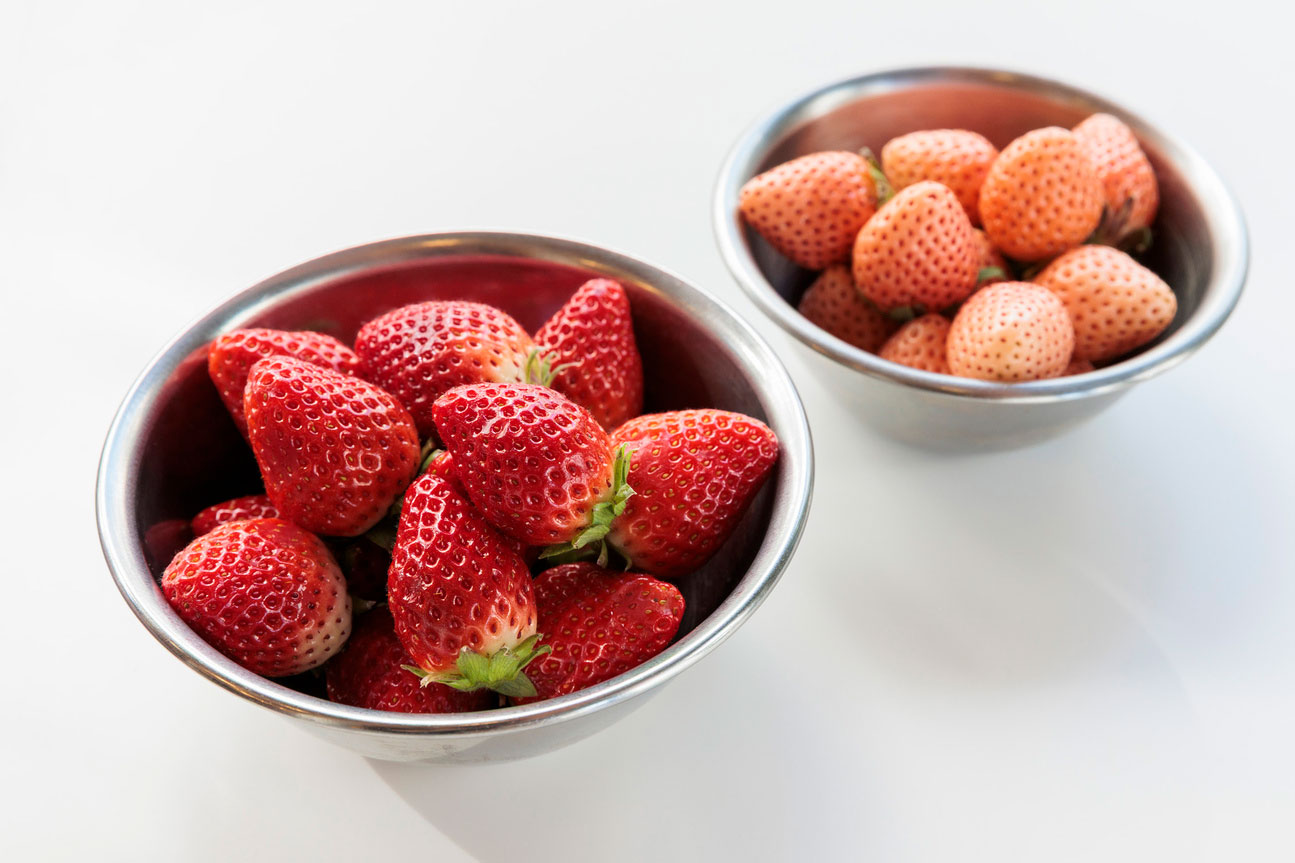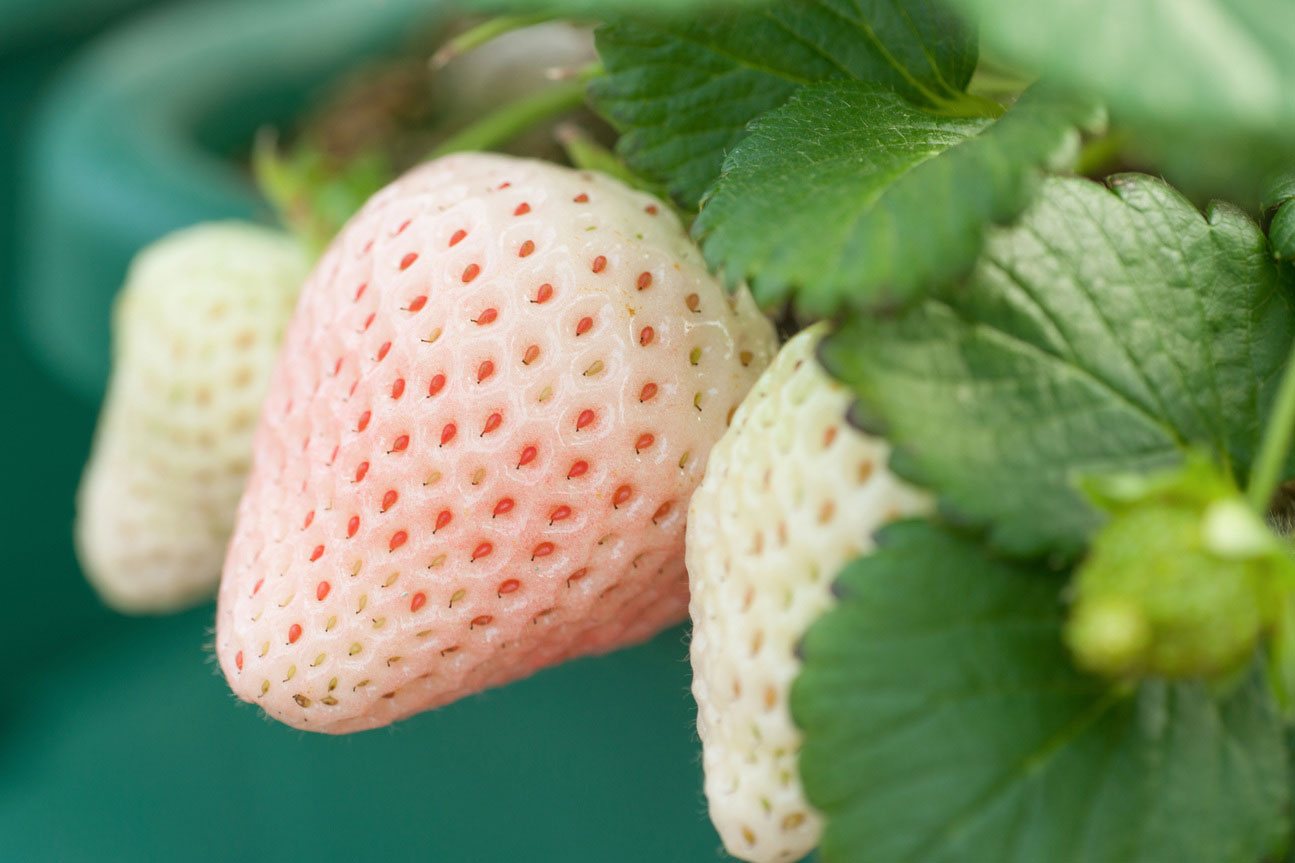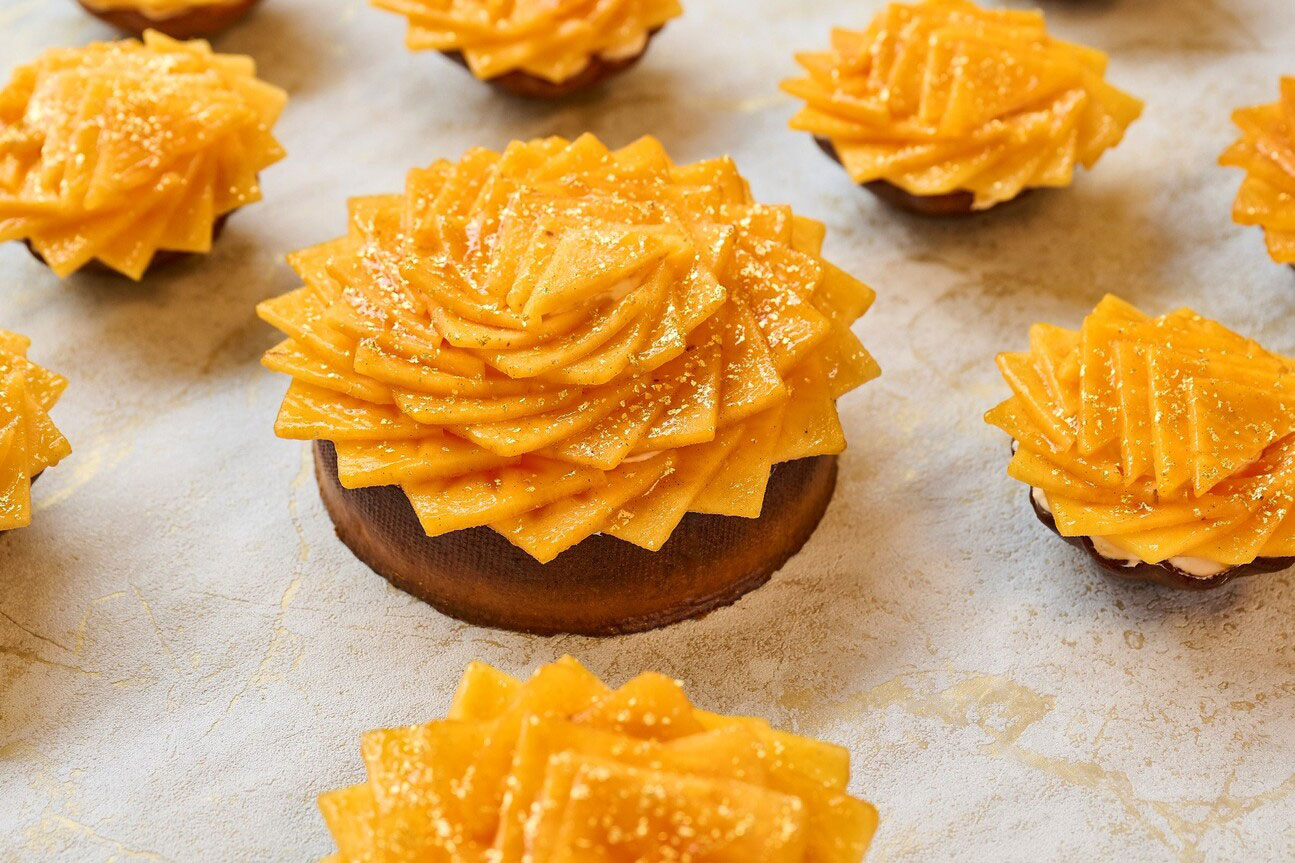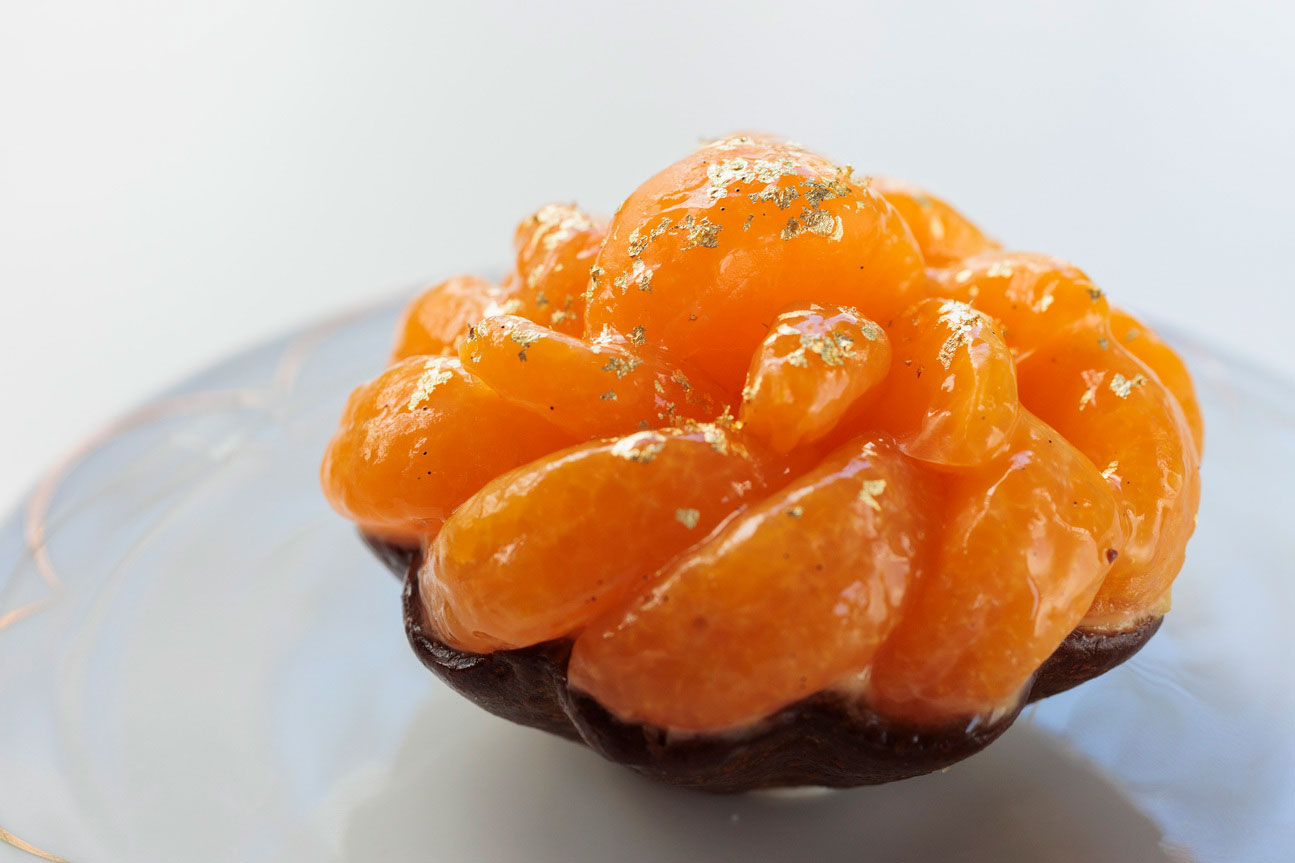
The Luxury of Japanese Fruits: Charles Henry’s Creative Tarts
(Photo: The design of the Tarte aux Fraises, like most of Charles’ creations, follows the café’s floral motif.)
Charles-Henry is bent in concentration over his latest artistic creation, his fingers making precise, often minuscule movements as he arranges a stunning three-dimensional color pattern. The medium this young French artist is working in is fruit—not just any fruit, but carefully selected pieces chosen for their seasonality, their size, the richness of their flavor, and, of course, their color and appearance. Charles is crafting a Tarte Fraise Blanche, a rich combination of a crispy crust and a Madagascar vanilla flan, topped with fromage blanc mousse and the perfect layers of white-pink strawberry slices that he is arranging with great care into a many petaled blossom. Gold flakes are gently sprinkled on top, completing the delicate work of art. This, along with other Charles creations, will be sold at his floral motif-decorated café, Charles-Henry, located in Tokyo’s trendy neighborhood of Daikanyama.
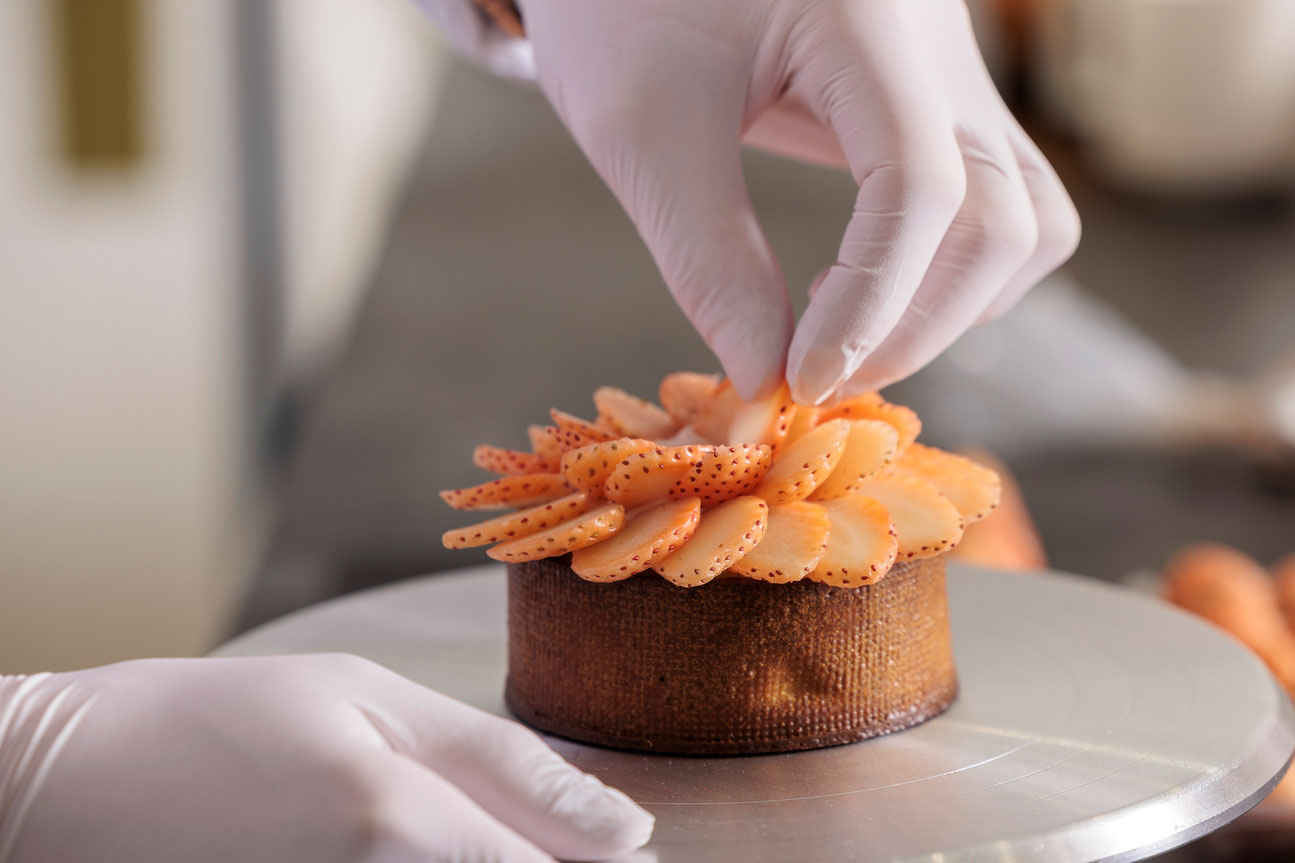
Charles-Henry carefully arranges the slices of strawberry on top of the tart, working in the open kitchen where café customers can watch him craft his creations.
A seasoned professional, Charles has a history of working in Michelin-starred restaurants, including Robuchon, before opening his shop in April of 2024. “I had always worked in fine dining, but I became fascinated by what was being created in the pastry section,” he says.

Charles-Henry brought his illustrious career spent in Michellin-starred restaurants to his floral-themed café, located just outside Daikanyama station in one of Tokyo’s trendiest neighborhoods.
Charles is just one of many international chefs and foodies who have discovered the wonders of Japan’s “premium fruits.” These are kinds of fruit that tend to be more expensive than garden varieties, but are far sweeter and more flavorful. “The Japanese farmers who grow these fruits really care about the quality,” says Charles. “They dedicate their life to cultivating the best and most beautiful fruits.”
Visitors to Japan are often surprised by the expensive fruits on display at department store food halls—¥10,000 melons, for example. These premium fruits aren’t meant for everyday consumption, but meant to be beautifully packaged and given as gifts on important occasions. The same kind of care that goes into growing and harvesting these melons, such as protecting each individual fruit while still on the vine, is par for the course for mangos, apples, grapes, and other fruits as well.
“You can get cheaper mangos from overseas, for example,” says Charles. “But some of them will inevitably be bruised or damaged. The Japanese mangos grown in Miyazaki, which are highly prized, however, will all be perfect, and taste incredible.” Miyazaki mangos are known for their large size, deep red skins, and high sugar content, thanks to the plentiful sunlight of southern Kyushu. The producers go as far as giving each mango on the tree its own netted bag that prevents it from hitting the ground when it falls, and bruising.
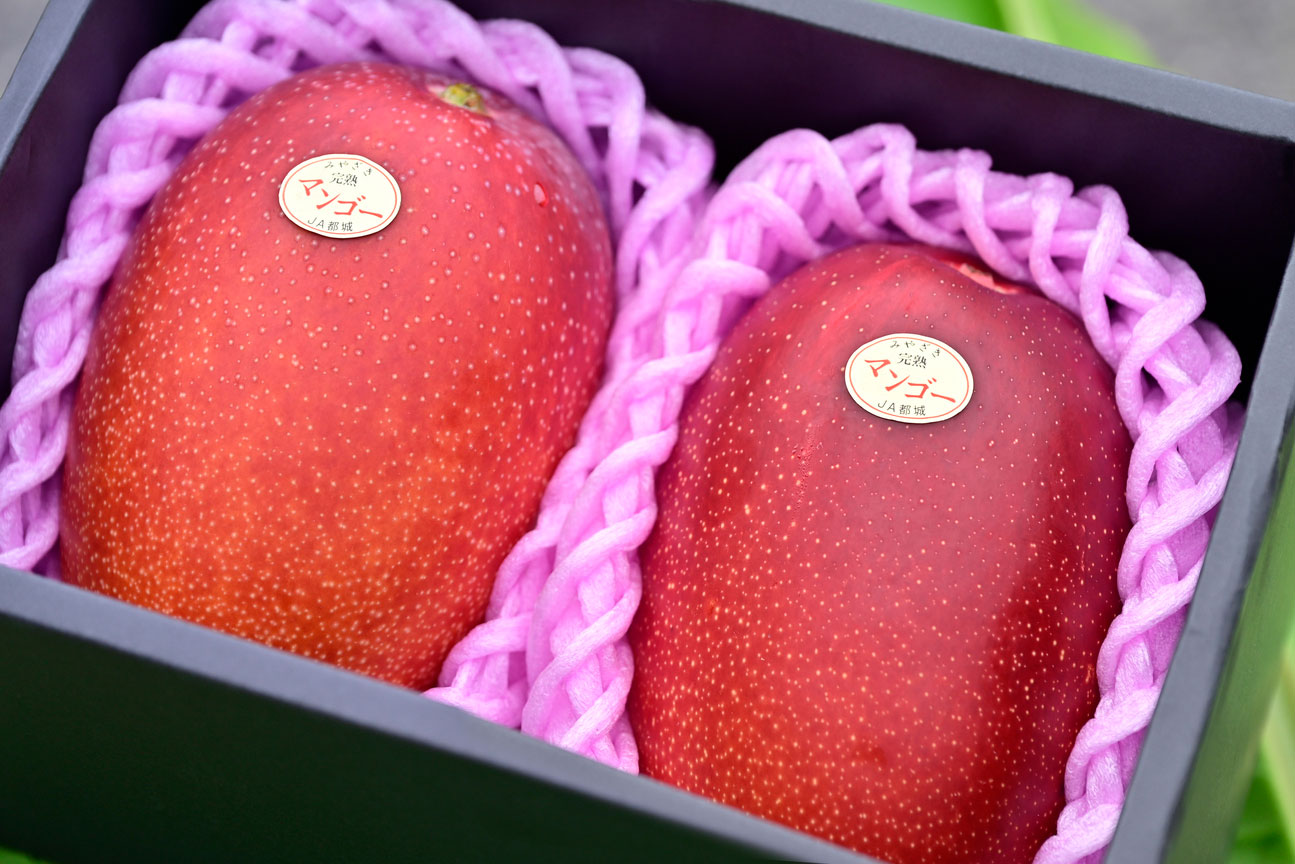
Miyazaki mangos are prized for their flaming red skins and rich taste, and even exported overseas for connoisseurs of Japan’s premium fruits. (photo: YAEKURA Noboru/AFLO)
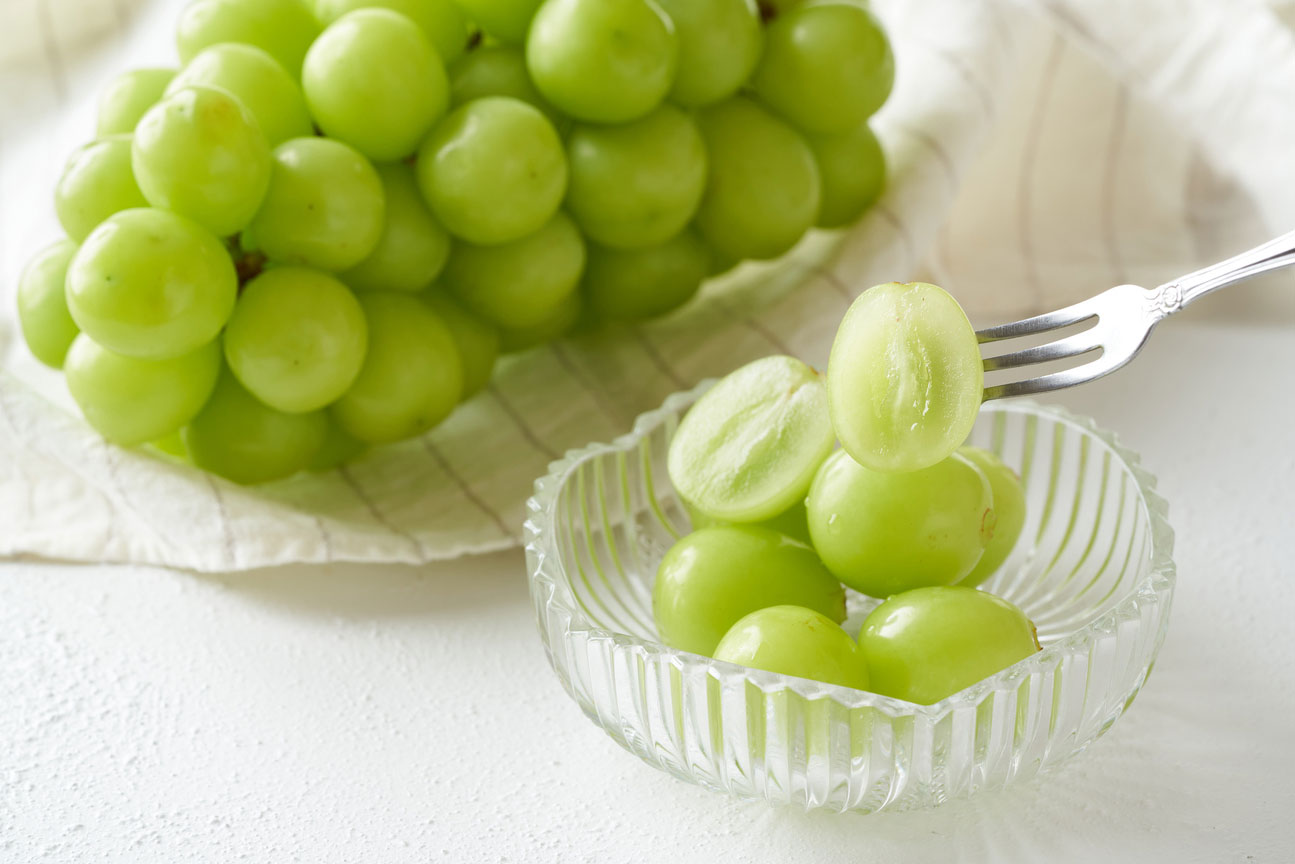
Shine muscat is a variety of grapes cultivated in Japan, known for its juicy, sweet flesh, light skin and fragrant muscat aroma.
Miyazaki mangos are just one of the many seasonal fruits Charles-Henry relies on over the year. “We constantly change our offerings depending on which fruit is in season, and which is the tastiest at the time,” he says. “I work with a middle man who has connections with farmers all over Japan. He selects the best ones, regardless of the region.” Charles sources a variety of fruits: shine muscat grapes from Yamanashi, figs from Sado Island, cherries from Yamagata, apples from Nagano, and much more: pears, peaches, lemon, mikan (a Japanese citrus), apricots, melons, persimmons—fresh and dried—and even the manicure finger grapes which resemble plump fingers.
And always strawberries. “Japanese people love strawberries, and want to eat them year-round, particularly in the winter,” says Charles. The variety depends on the season. He says people demand bright red strawberries for the Christmas season, a trend that has become a cultural tradition. “Pink and white pink varieties, like the ones we are using now appear later,” he says. “In a few weeks, it will be the season for white strawberries.”
When Charles first tried the Japanese persimmon, or kaki, he wasn’t a fan. “It didn’t make my list of favorite fruits,” he says. “But I saw it as a challenge. I created a tart with a brownie, vanilla cream and the dried kaki for texture. I added whiskey, chocolate, olive oil, and pecan nuts in the brownie. It was very rich in flavor—and that’s how I learned to love kaki.”
Regardless of the fruit used, Charles emphasizes the importance of presentation and taste. “At the end of the day, a fruit tart relies on the fruit on top, so we try to make it special, to add value,” he says. Japanese luxury fruits are ideal in this case, as they can be found in specific and consistent sizes, colors, and tastes, to match particular needs. For the strawberry tarts, for instance, he uses smaller strawberries. For the silky orange toppings on the mikan tarts, all the small segments of the mikan citrus used are the same size. They are peeled, and every tiny bit of pith is meticulously removed by hand. It’s a very labor intensive production, but the results is a “super clean and luxurious look,” Charles says.
Though based on traditional French tarts, the Charles-Henry versions are not, he says, exactly like the ones you would find at a Parisian corner patisserie. “The flavor is similar, based on vanilla and French butter, but ours are more modern,” Charles says. He looks for a balance with saltiness and texture, and adds more layers to add complexity to the product. But it is more the types of fruit that break the traditional French mold. “I enjoy making French-style tarts with Japanese produced fruits that aren’t used in France,” says Charles. “No chef in France would make a white strawberry tart, and no one would ever imagine a melon tart or a grape one.
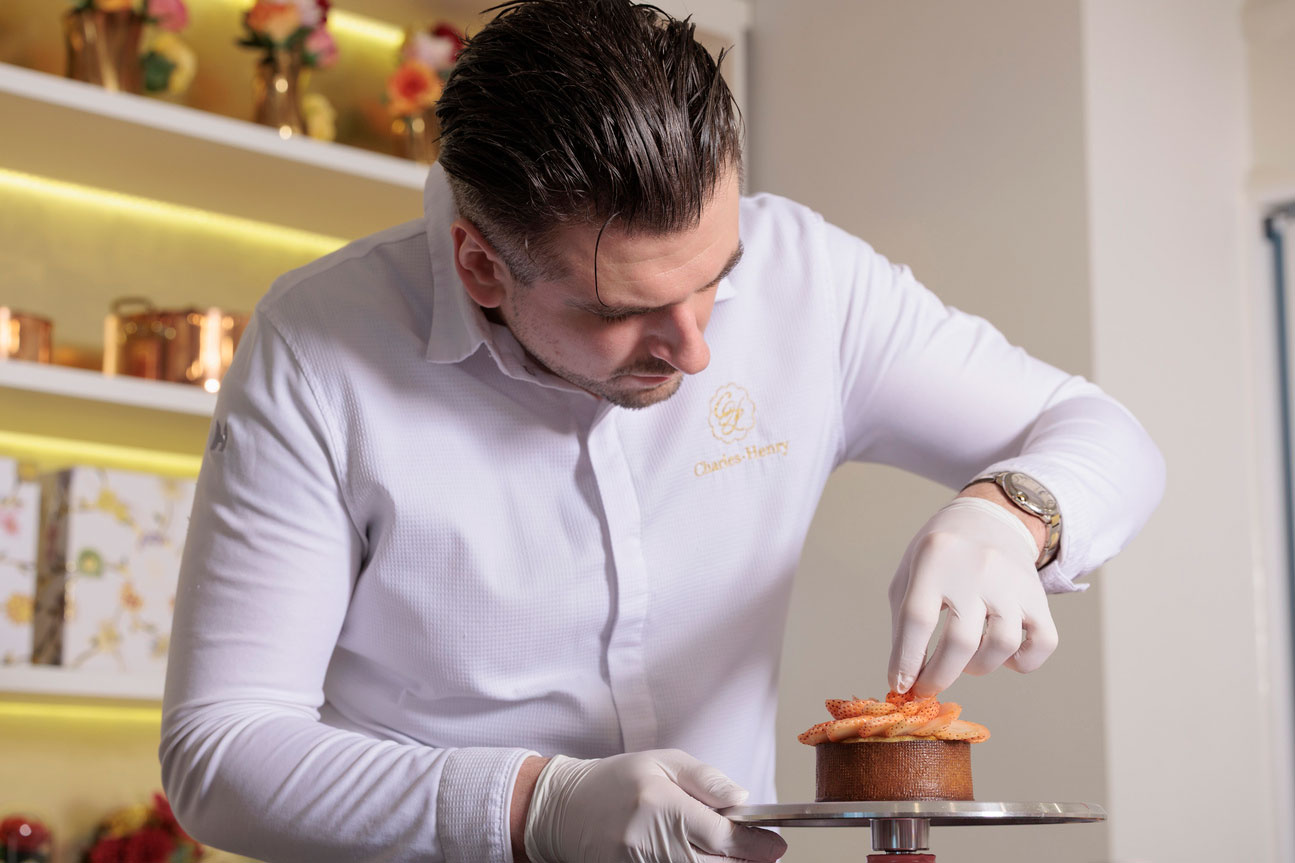
Charles-Henry praises the farmers who produce Japan’s luxury fruits he uses in his creations for their passion and dedication to perfection, both in appearance and taste.
Charles says that the increased international interest has seen exports of Japanese fruits increase in recent years. Shine muscat, the variety of plump and juicy seedless grapes that have become hugely popular in Japan are now finding fans overseas. “And don’t forget the Miyazaki mangos,” says Charles. “They have a big reputation overseas. A chef friend of mine in Singapore orders the mangos from Japan, even though the prices are extremely expensive. It’s a luxury brand.”
His advice to visitors to Japan who are interested in high-end Japanese fruits is to try some, before making a deeper dive by visiting a region where the fruits are being grown. It’s a reason to explore corners of Japan that may be off the beaten track, and many places, including strawberry and grape farms, offer pick-it-yourself harvesting. “The countryside here is beautiful,” Charles says. “The farmers, like farmers everywhere, are very nice people, very kind. And the freshly picked fruit will taste fantastic.”

